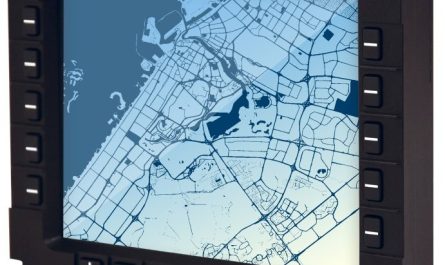What are IoT Devices?
The Internet of Things (IoT), or Internet of Things, refers to the billions of physical devices around the world that are now connected to the internet, collecting and sharing data. These “things” include everything from wearables like fitness trackers and smartwatches to home appliances, industrial machines, and infrastructure components like traffic lights and energy meters. IoT devices have built-in sensors, processors and communication capabilities that allow them to send and receive data via wireless networks without requiring human intervention.
How IoT Devices Connect and Communicate
IoT devices connect to networks using various technologies like Wi-Fi, Bluetooth, cellular networks and low-power wide-area networks. The most common connectivity protocols used include Ethernet, Zigbee, 6LoWPAN, Thread and Bluetooth Low Energy (BLE). These wireless connections allow devices to share data with manufacturers, service providers and other devices. Some critical IoT connectivity technologies include:
– Wi-Fi: Devices like smart home appliances, security cameras and wireless printers use Wi-Fi to connect to local networks and the internet.
– Bluetooth: Fitness trackers, smartwatches and wireless headphones use Bluetooth for short-range connectivity between paired devices.
– Cellular: Cellular connectivity enables long-range communication for devices like fleet management systems, smart meters and industrial sensors located outside of Wi-Fi zones.
– Low-power WANs: New low-power wireless area networks allow battery-powered devices to connect over long distances for years on small coin cell batteries.
– 6LoWPAN and Thread: These IP-based protocols allow IPv6-enabled devices to communicate over different link layer technologies like Zigbee and BLE.
Once connected, IoT devices use application layer protocols like HTTP, MQTT and CoAP to exchange data and commands with other systems and applications. This multi-tiered network of heterogeneous devices forms the backbone of the hugely expanding IoT ecosystem.
Applications and Uses of IoT
The connectivity and data collection abilities of IoT devices have enabled revolutionary applications across various sectors including consumer, industrial, infrastructure and more:
– Smart homes: Appliances, security systems, lighting and thermostats equipped with sensors allow remote monitoring and automation from anywhere.
– Wearables: Fitness trackers, smartwatches and medical devices collect biometric data to power personalized health and wellness services.
– Smart cities: Intelligent transportation, environmental monitoring, utility management and public safety systems improve living standards for urban populations.
– Supply chain management: Sensors on items, containers and vehicles provide real-time location tracking and status updates throughout production and distribution chains.
– Industrial IoT: Condition monitoring sensors, embedded systems and machine vision transform factories with predictive maintenance, automation and process optimization.
– Agriculture: Soil sensors, drones and smart greenhouses deploy data-driven practices for higher yields, resource efficiency and livestock monitoring.
– Retail: Beacons, digital signage and inventory track-and-trace solutions deliver engaging customer experiences and supply chain visibility.
Security and Privacy Challenges of IoT
While IoT delivers immense benefits, interconnected devices have also introduced new security vulnerabilities that could be exploited by bad actors:
– Default Credentials: Many IoT manufacturers do not enable password changes or lock out default credentials, making devices easy hack targets.
– Dated Firmware: Without regular security patches, outdated systems remain open to known issues like buffer overflows and SQL injections.
– Lack of Encryption: Transmitting passwords, personal data and system communications in cleartext allows interception and tampering.
– Insecure Protocols: Usage of unprotected legacy protocols like Telnet, HTTP and FTP transmits information without protection.
– Poor Access Control: Open interfaces and absent authentication methods grant unauthorized remote access.
– Lack of Segmentation: When breached, unisolated systems can be used to access broader enterprise networks and data.
– Privacy Concerns: Wearables, home assistants and utilities may share intimate usage patterns and geolocation details without clear consent.
Device manufacturers, cloud providers, regulators and consumers must work collaboratively to standardize security best practices including proper identity and access management, encrypted connectivity, regular updates, and transparency around data collection and usage. With a risk-based approach, the IoT’s benefits can be fully unlocked while mitigating vulnerabilities.
The Future of IoT
As network speeds and connectivity options increase, while hardware costs and power needs decrease, IoT adoption will continue growing exponentially. Gartner estimates over 20 billion connected devices will be installed worldwide by 2020 alone. Key trends that will define the future of IoT include:
– 5G Networks: Ultra-low latency 5G will support real-time, mission-critical IoT applications across industries requiring split-second response times.
– AI Integration: On-device and edge-based AI will power autonomous decision making, predictive maintenance applications and personalized smart spaces.
– Blockchain Adoption: Distributed ledgers increase trust for identity, payment and data-sharing applications while raising interoperability between devices.
– Urban IoT Meshes: Dense sensor networks underpin intelligent transportation, infrastructure, utilities and environmental protection in future smart cities.
– Industrial Revolution 4.0: Fully digitalized, automated and data-driven factories approach mass customization thanks to integrated IIoT.
– Hyper Connectivity: Trillions of interconnected autonomous devices, vehicles and “smart dust” sensors will saturate every aspect of our lives creating new possibilities and challenges.
The next wave of IoT innovation will introduce devices, technologies, platforms and use cases that remain difficult to conceptualize today. With care for privacy and security, the IoT’s growing connectivity has potential to solve humanity’s grand challenges in sustainable development, healthcare, education and more. Its full promise lies ahead.
*Note:
- Source: Coherent Market Insights, Public sources, Desk research
- We have leveraged AI tools to mine information and compile it


